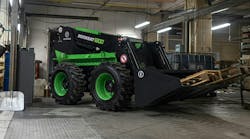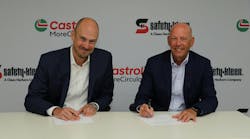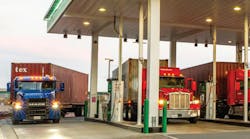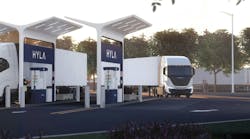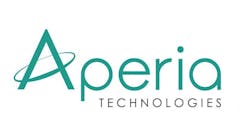"Part of the problem in complying with future emissions standards is that there is so much we don't know," says Lorne Fleming, CEM, and chair of AEMP's emissions task force. "The old saying that 'the devil is in the details' is absolutely correct."
What is known is this. The next wave of new engines will reduce particulate matter (PM), and it will be followed by a second wave that targets NOx.
The "devil in the details" plays out this way, according to Joe Mastanduno, product marketing manager, engines and drivelines, John Deere Construction and Forestry. Engines below 25 horsepower are already Tier 4. Existing engines between 25 and 75 horsepower are labeled interim Tier 4. The 75-horsepower engines currently used to power large skid steers and small compaction equipment, for instance, are Tier 3 and have the capability of reducing particulate matter from a 0.2 level to the 2010 requirement of 0.02 level.
In 2011, however, managers of off-road equipment will see changes. Machines 75 horsepower and above will arrive from the factory equipped with particulate-matter filters that help lower PM by 95 percent, says Mastanduno. "That's a huge reduction, and you can't do it with engine design alone," he says. "The only way to achieve that level is to add the aftertreatment filters."
John Bartz, emissions solutions manager at Volvo Construction Equipment, concurs. "In prior emissions years, we have been able to solve within the cylinder through turbo charging, exhaust gas recirculation (EGR), fuel system optimization, and by working on the combustion of the fuel. The huge PM reduction will be achieved by the implementation of particulate traps."
In 2011, engines of 175 or greater horsepower equipped with PM filters will be classified as interim Tier 4. They will be classified as final Tier 4 (after further reductions in both PM and NOx) in 2014. By 2013 the 25- to 75- horsepower machines will become final Tier 4, and by 2015 machines between 75 and 174 horsepower will go to final Tier 4.
"For five years we have different horsepower brackets that are phasing in," Mastanduno says. "By 2013 and 2015, the final Tier 4 engines on these machines must reduce NOx substantially. We have to find a way of doing this, just like the on-highway vehicles are doing beginning in 2010."
Another 2011 change, Bartz says, is that Tier 4 engines will be required for larger equipment, 175 to 750 horsepower, as used in haulers and larger wheel loaders. He described these machines as, "the meat of most construction-equipment fleets."
The reason for tightening the noose on particulate matter, which is nothing but soot, is that PM aggravates respiratory illnesses, contributes to lung cancer, and can cause heart disease, according to scientific studies. NOx, which is formed by high combustion temperature, contributes to acid rain and ground level ozone (smog), the studies say. It can also have a negative impact on air quality.
Ironically, high temperatures that destroy particulate matter also form NOx. Lowering the temperature reduces NOx but forms particulate matter. This creates the problem of balancing the combustion process to satisfy both PM and NOx. And if all this horsepower phase-in is not convoluted enough, reducing both PM and NOx has given rise to two main technologies. One method Mastanduno calls "massive exhaust gas recirculation (EGR)." The second technology is selective catalytic reduction (SCR).
Muddying the stream is yet another emissions regulation, triggered by the California Air Resources Board, requiring engine manufacturers not only to reduce particulate matter and NOx on new engines, but also reduce greenhouse gases on equipment already in the field. EPA and CARB emissions standards are the same for new engines. Although 18 states are likely to adopt CARB emissions standards to reduce pollution from existing machines, Bartz says, "nobody has adopted that to my knowledge, because it can't be adopted without EPA approval."
The problem is that many regions, counties and even cities, such as New York, have emissions regulations that are unique to that jurisdiction, says Fleming, director of Grace Pacific's equipment division. For example, he says, "Our friends at the Oakland Port Authority just announced that if your equipment has a non-Tier engine, you're out of there. How many people are going to be able to comply with that? There are other Port Authorities that have done some modification of the same thing, Portland, for instance.
"The economic impact of such regulations can be seen in Oakland. It slipped from No. 4 in volume to No. 5, largely because people anticipated that this would happen."
Fleming says it is unclear what methodologies will be used to reduce engine exhaust components such as greenhouse gas emissions. "I don't think anybody really knows," he says.
Not only is the greenhouse gases reduction technology unclear, Fleming says, but there is something of a "cat fight" going on between Navistar's approach to reducing PM and NOx and that of other engine manufacturers in regards to the 2010 requirements for on-road engines. The majority of engine makers plan to meet the standards with a combination of EGR and SCR and using additional components such as particulate traps and engine regeneration, along with low ash oil and ultra low sulfur fuel.
Navistar will not use the EGR/SCR combination of technologies, says Tim Shick, director of sales and marketing for the company's engine group.
"All manufacturers since 2002, other than Caterpillar, have gone with a cooled-EGR system to reduce emissions," Shick says. "For 2010, NOx requirements are going down from a current 2007 level of 1.2 grams per horsepower (for on-road equipment) to a 0.2 gram level. We at Navistar will continue to go on that EGR technology in 2010."
There are reasons why the company, which builds International trucks but no off-road equipment, is not going with the EGR/SCR combo, says Shick. First, International customers say they don't want to add any more emissions apparatus to their vehicles, such as SCR liquid urea systems, and second, they don't want operators to be involved with emissions controls beyond simply turning the key. SCR technology requires operators to regularly add liquid urea or diesel emissions fluid (DEF).
Shick says other engine makers adopted SCR for North America because they already had developed the technology for Europe. "We are an American company and we do not participate in the European marketplace," he says. "Other engine manufacturers had to turn to SCR to sell in the European market. We never did."
The technology debate going on between Navistar and other engine OEMs is over whether or not EGR alone can achieve necessary PM and NOx levels.
"Others say, all things being equal, that achieving those levels can't be done using only EGR," Shick says. "Other things will degenerate or worsen with increasing rates of EGR, they say."
The "you can't achieve" claims are easily refutable, he says, "because there is a direct relationship between the amount of exhaust gas you put into an engine and the amount of NOx it gives off in the combustion process. All EGR does is replace oxygen in the cylinder. You have less oxygen to produce NOx. That's not the challenge. The challenge is how to maintain fuel economy, oil and maintenance intervals and maintain power and drivability that customers are use to."
Shick says International trucks that Navistar will have on the road in 2010 will have all the same ratings as they do now; will drive, sound and maintain and use fuel "just like today's engines." On fuel economy, he says, the net impact will be zero, 1 or 2 percent above where they are today.
Navistar is meeting the 2010 standards with emissions credits. "If you look at the standard, which is 0.2, Navistar will still be at 0.5," says Deere's Mastanduno. "Eventually, those credits will run out. As Navistar will tell you, they are working hard to bring the emissions level down from 0.5 to 0.2, and that requires more research and development work and maybe some changes.
"So far, they haven't demonstrated that they are going to come out below the emissions level. It's kind of a gamble," he says.
Mastanduno said that using EGR only "is a way (for Navistar) to differentiate themselves and a way to say the operator doesn't have to worry about the second fluid. That's their marketing claim, but if you look at the off-highway agriculture where SCR technology has been introduced, the claims there are completely opposite of what Navistar says."
These changes in emissions standards will impact asset managers several ways, according to Mastanduno. First, in 2011 when PM filters are added, they will experience higher operating costs, whether it be fuel that is used to help regenerate the filter or, in some cases, removing the filter every 3,000 to 4,500 hours to clean it.
"These are costs we haven't experienced before," he says. "Owning and operating costs will go up and, because the level of technology is much higher on the later-Tier engines, the price to buy the machines will go up."
Fleming worries about other headaches: additional training for technicians and operators; the resultant aggravation of finding and retaining qualified technicians; and the maintenance of the advanced-technology equipment itself.
"When it quits working, how much is it going to cost to get it going again?" he says. "As an example, we have a little portable screen for a piece of rock-processing equipment that has a computer on it. The computer runs the machine, engine, generator, safety shutdowns and starting procedure. Now I have to have a guy in the quarry who not only knows how that machine's mechanical process works, but also is able to work his way through a computer and complex system-programming issues."
And, he says, when the integrated control system "causes complete system failure, how much is it going to cost to get it running again? The board alone, along with the screen, is not serviceable. You have to replace the whole thing, and that is about $3,000."
But the biggest impact of the changes is that machine operators have to be made aware that the PM filter must be regenerated. "This is something the operator didn't have to do in the past," Mastanduno says. "You have to make sure the operator has enough training in the new technology and make sure regeneration is happening."
Despite the changes that asset managers will have to adjust to, he says, "SCR is a proven technology. If you look at the on-highway market, you will see that seven out of eight manufacturers are going with SCR starting in January. For everybody, SCR is a safe technology."
Clint Schroer, Cummins, says the company had invested in "critical technologies" to meet the more stringent emissions levels, including combustion research, fuel systems, turbo charging, filtration, exhaust aftertreatment and control systems.
"All this technology becomes more and more significant," he says. "It means we can achieve the goal of maximizing customer value by providing the right technology all from within our on-road technology portfolio with every system integrated." He says the Cummins cooled-EGR subsystem and the Cummins particulate filter aftertreatment have proven their durability and reliability.
And it is in the culmination of all this technology that the Equipment Triangle can again prove itself, says Fleming.
"The vendor, customer and distributor all have a vested interest in each other's success. We are all in this together. And I believe that relationship is going to become increasingly important. I depend on distributors and OEMs to keep me updated on this emerging technology. If I can't find out why something is not working, then I don't know what repairs to make and even what parts to buy."
Although Fleming says he is no pessimist and believes the emissions evolution is going to be exciting, it's no time for "anybody to feel easy about the direction we are going to take."
"You will see increased regulations," he says. "You will see not only refining of regulations, but you are going to see new initiatives and efforts by more governmental entities. Industry input will be minimal, I believe. Even CARB isn't listening to anybody in the industry; they are listening to their academics."
Navistar's Shick says there's no single solution. "There isn't a single, magical technology. There are a variety of ways to meet these new regulations. Choices have to be made, and these choices have to do with what's best for each fleet's customers."
